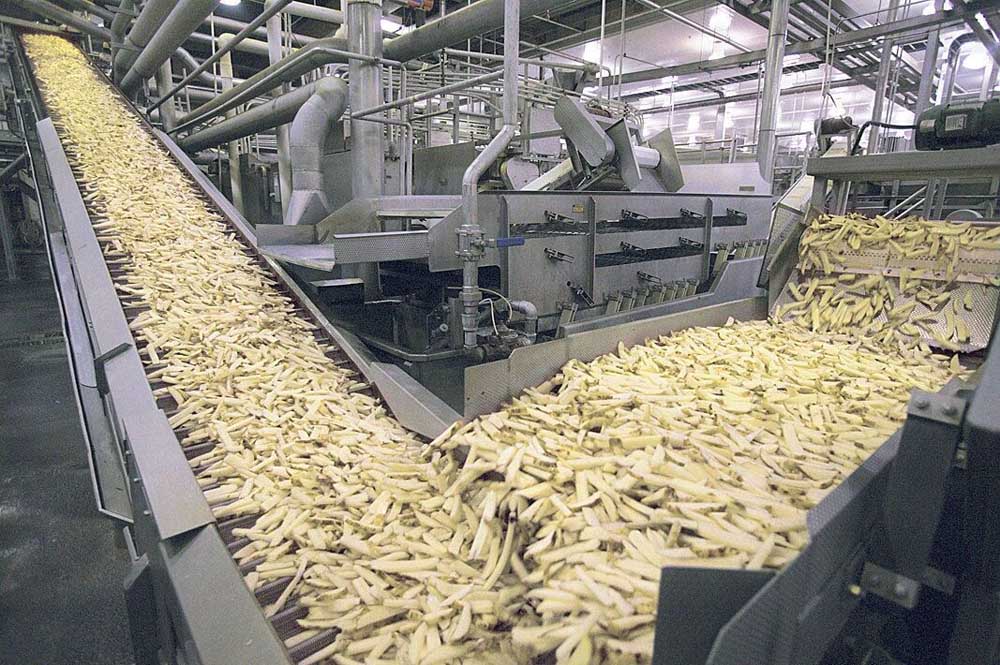Expanded exports could add $1 billion to potato industry
Published 6:30 am Tuesday, February 27, 2024

- French fries are produced at the McCain Foods plant in Burley, Idaho. Fries are among the potato products that are exported to customers around the world.
“Moderate and achievable” expansions in foreign market access could eventually generate an additional $1 billion in exports and 5,600 more jobs for the U.S. potato industry, the National Potato Council says.
From July 2022 to June 2023, the U.S. exported $2.2 billion in potatoes and potato products, generating $4.78 billion in economic activity.
The council’s report estimates a 10% increase in exports to Canada, Japan and South Korea; a 25% increase in exports to other East Asia markets, Mexico and select countries in the Middle East; and an additional $100 million in fresh exports to Mexico and Japan.
“We all know potatoes are America’s favorite vegetable, now we know that potatoes also hold the key to unlocking some further job growth and economic development,” said Bob Mattive, a Colorado potato farmer and incoming council president, during a press conference.
The report follows the council’s economic impact study released last year. It found that the farm gate value of U.S. potato production is more than $10 billion a year.
Best potential
The council is eyeing a lot of the markets that were included in the original Trans-Pacific Partnership agreement.
“Some of our best markets for processed potatoes also have a lot of potential to accept other channels of our trade,” council CEO Kam Quarles said. “Like Mexico, like Japan — we really want to build those out for fresh.”
“Often the customers you have are the most valuable ones, rather than the ones you’re seeking to have in the future,” Quarles said.
Obstacles
The biggest obstacles are tariffs, fluctuating exchange rates and sanitary and phytosanitary standards.
Not being included in TPP put U.S. potato farmers at a trade disadvantage due to tariffs, said Ted Tschirky, council vice president of trade affairs and a Pasco, Wash., potato farmer.
Former President Donald Trump withdrew the U.S. from the original TPP in 2017, while the remaining countries established the Comprehensive and Progress Agreement for Trans-Pacific Partnership, or CPTPP.
“Robust” sanitary standards are reasonable, Quarles said.
“You’re not talking about reasonable mitigation, you’re talking about countries utilizing pest and disease excuses as reasons not to negotiate, not to open their markets, not to consider the possibility of foreign imports coming in,” he said. “It’s when a very reasonable standard tips over into a weapon that’s used essentially to protect a market….”
The U.S. will use all mechanisms available to break past such stonewalling techniques, Quarles said.
Japan
Japan could be a “massive” market for fresh potatoes, representing $150 million to $200 million annually, said Idaho Falls farmer RJ Andrus, whose term as council president is ending.
“They have a small, but very politically active domestic industry,” Quarles said. “They import no fresh table stock potatoes from anywhere right now.”
The U.S. has been shut out for decades, but has ramped up efforts to enter the market in the last five years.
There was no positive movement from Japan during a bilateral agreement discussion last September, Quarles said.
“The Japanese government has just dug their heels in,” Quarles said. “It’s a big stalling exercise right now by the Japanese, and we’re trying to pry that open.”






